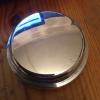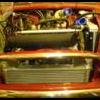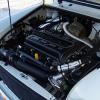
Engine Assembly Sealent?
#31

Posted 31 December 2009 - 07:33 PM
Here is the data sheet for 5699.........
http://www.loctite.s...3788_5699EN.pdf
I am sure that you will agree that the datasheet is more accurate and carries more weight than the merchandising document
#32

Posted 31 December 2009 - 08:09 PM
#33

Posted 31 December 2009 - 09:27 PM
not sure or dose it creat one wheren cureing?
#34

Posted 31 December 2009 - 09:50 PM
i seem to remember once the moisture gets to it, it starts giving off that vinegary smell.
#35

Posted 31 December 2009 - 10:08 PM
However, Martin, you need to be aware that Loctite RTV or ANY RTV compound for that matter (as I recently found out) uses moisture to cure, that moisture comes from the air.
So we were both right and both wrong on a 50/50 basis
Slàinte Mhath
#36

Posted 31 December 2009 - 10:11 PM
i think it creates one as it cures,
i seem to remember once the moisture gets to it, it starts giving off that vinegary smell.
That's right. The moisture acts as a catalyst and the by product of some, but not all, is acetic acid; that strong vinigary smell, and in my opinion the better of the silicon sealants.
Silicon sealant is not best suited to engine usage as its properties do not lend itself to it, also, on injection engines, the silicon will poison the lambda sensor and the cat
Edited by Sprocket, 31 December 2009 - 10:11 PM.
#37

Posted 01 January 2010 - 12:07 PM
Ok so I will concede that silicon sealant is an RTV product using moisture to cure and I did not fully understand its make up. I was refering to the silicon sealant's content of acetic acid as a solvent.
However, Martin, you need to be aware that Loctite RTV or ANY RTV compound for that matter (as I recently found out) uses moisture to cure, that moisture comes from the air.
So we were both right and both wrong on a 50/50 basis
Slàinte Mhath
That seem's fair enough
So it looks like we have all learnt something from this one then
1 user(s) are reading this topic
0 members, 1 guests, 0 anonymous users

















